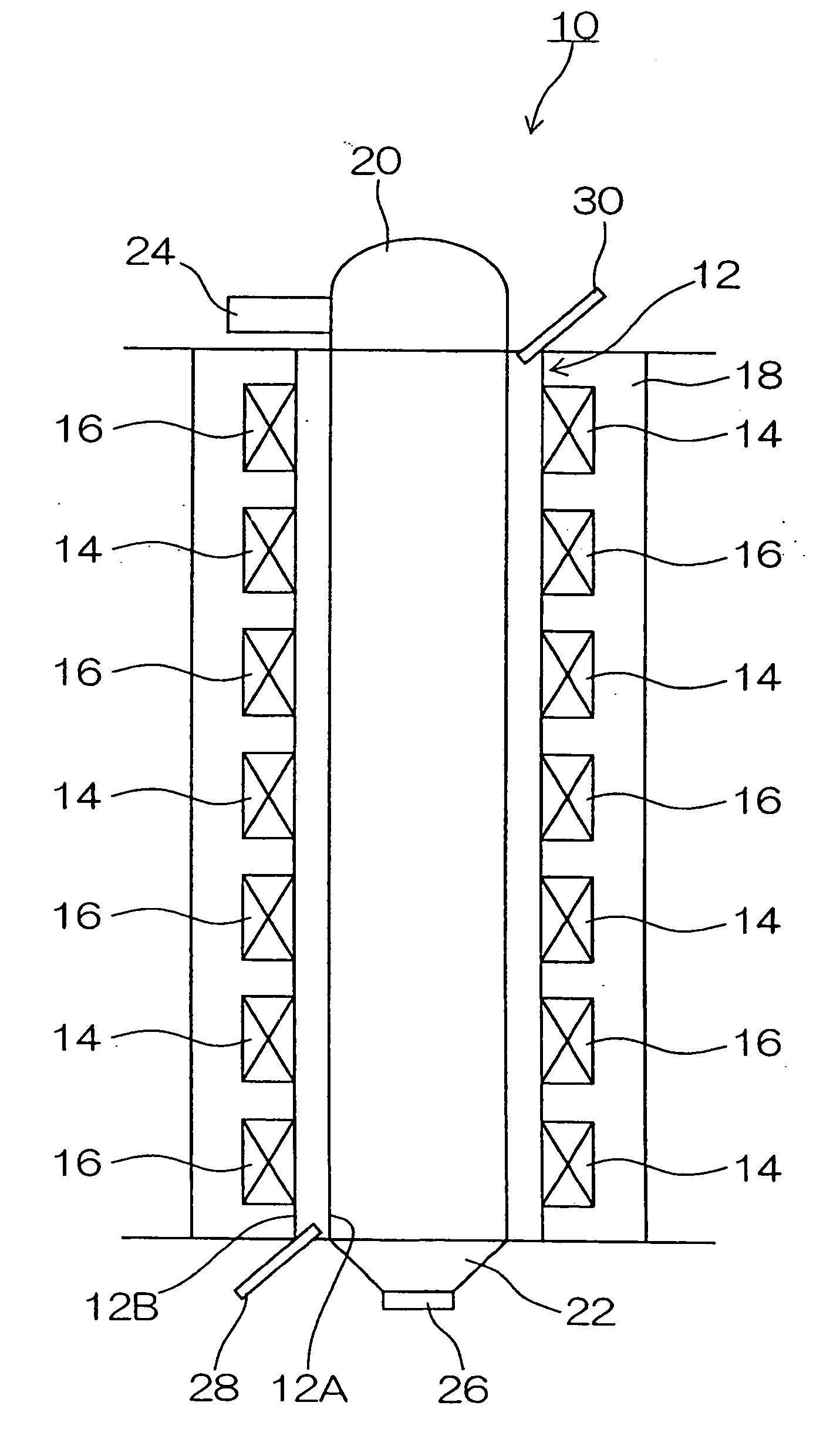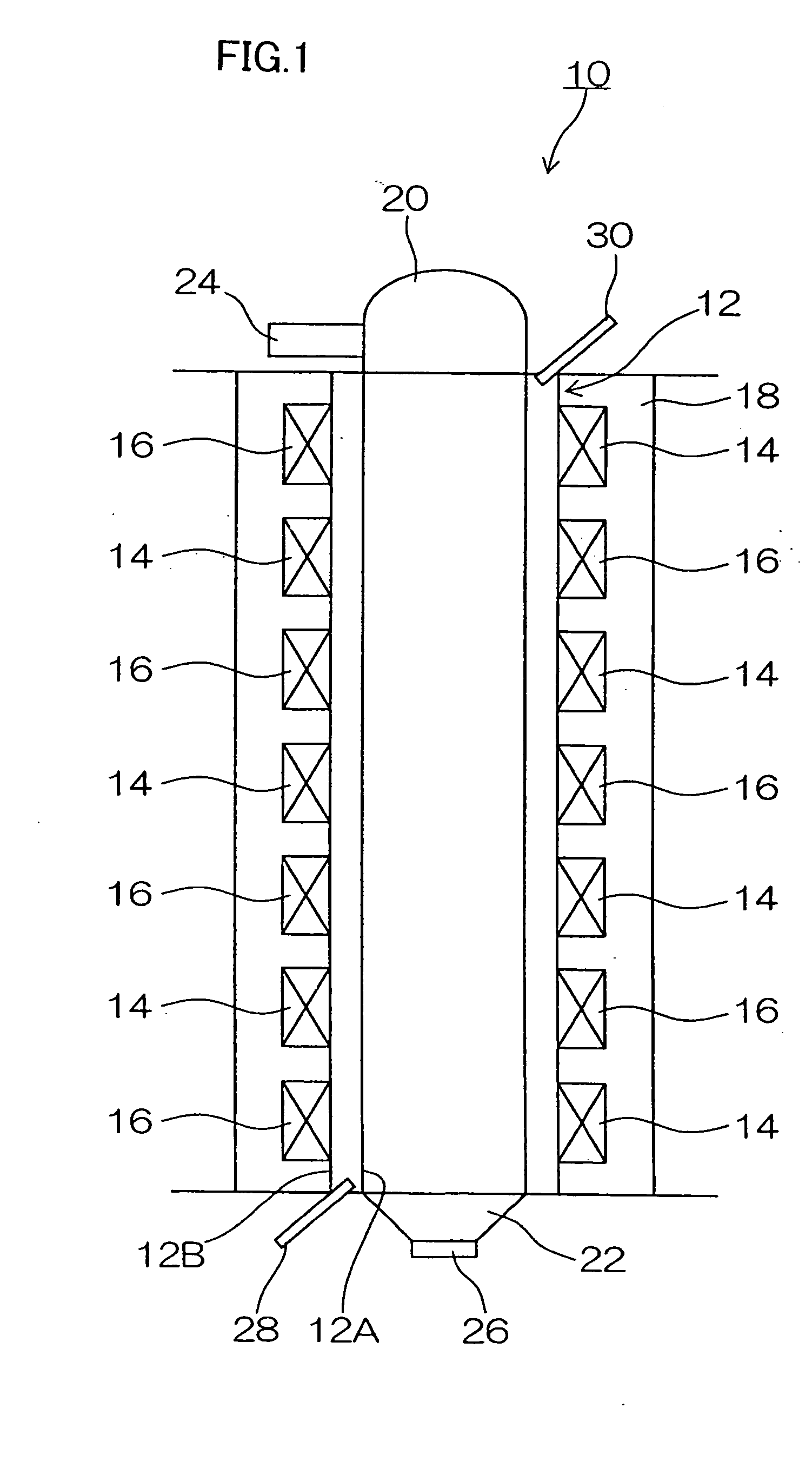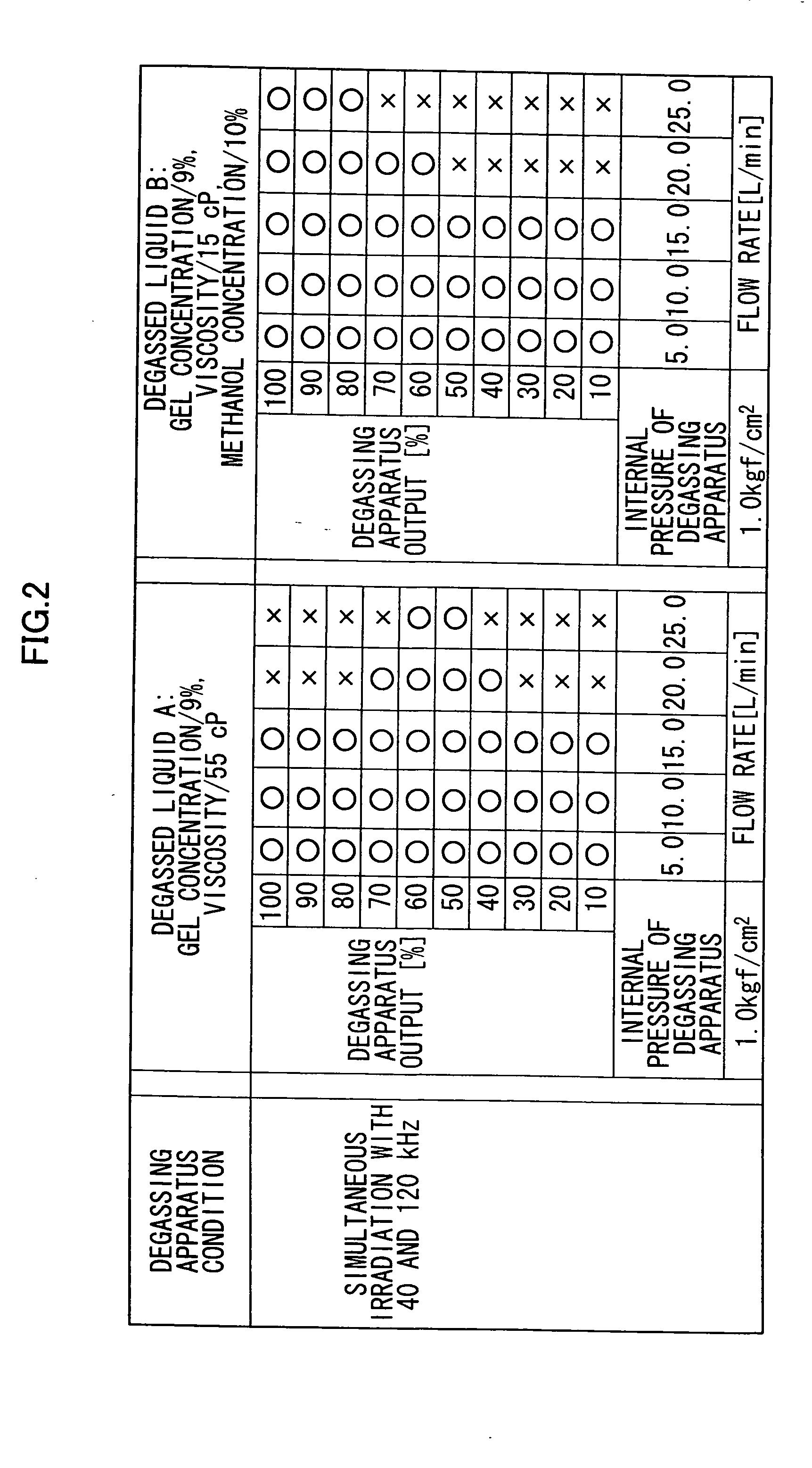Method and apparatus for degassing coating liquid
a coating liquid and method technology, applied in liquid degasification, separation processes, coatings, etc., can solve problems such as problems that cannot be solved, and good and uniform coating films cannot be formed, so as to prevent bubble defects
- Summary
- Abstract
- Description
- Claims
- Application Information
AI Technical Summary
Benefits of technology
Problems solved by technology
Method used
Image
Examples
examples
[0057] In the description below, an example of the present invention will be compared with a comparative example.
[0058] The coating liquid degassing apparatus 10 configured as shown in FIG. 1 was used in both example and comparative example. As already described, in the example, the ultrasonic vibrators 14 had an oscillation frequency of 40 kHz, while the ultrasonic vibrators 16 had an oscillation frequency of 120 kHz. In the comparative example, the ultrasonic vibrators 14 and 16 had an oscillation frequency of 40 or 120 kHz.
[0059] The maximum total output of ultrasonic waves was 1,500 W in both example and comparative example. The total output was varied at 10% increments up to 10 to 100% of the maximum value.
[0060] The inner pipe 12A had an inner diameter of 124 mm and a length of 845 mm. A uniform pressure (liquid pressure) of 98 kPa (1.0 kgf / cm2) was exerted on the interior of the inner pipe 12A.
[0061] A flow rate of the coating liquid is varied from 5.0 to 25.0 liter per m...
PUM
| Property | Measurement | Unit |
|---|---|---|
| pressure | aaaaa | aaaaa |
| internal pressure | aaaaa | aaaaa |
| oscillation frequencies | aaaaa | aaaaa |
Abstract
Description
Claims
Application Information
 Login to View More
Login to View More - R&D
- Intellectual Property
- Life Sciences
- Materials
- Tech Scout
- Unparalleled Data Quality
- Higher Quality Content
- 60% Fewer Hallucinations
Browse by: Latest US Patents, China's latest patents, Technical Efficacy Thesaurus, Application Domain, Technology Topic, Popular Technical Reports.
© 2025 PatSnap. All rights reserved.Legal|Privacy policy|Modern Slavery Act Transparency Statement|Sitemap|About US| Contact US: help@patsnap.com



